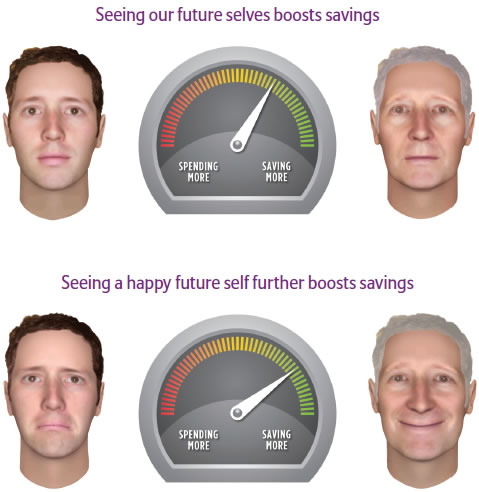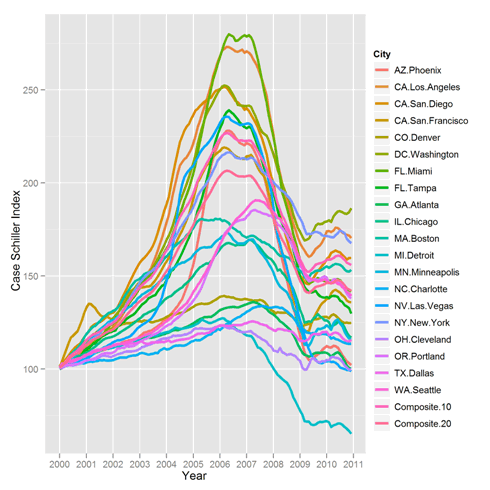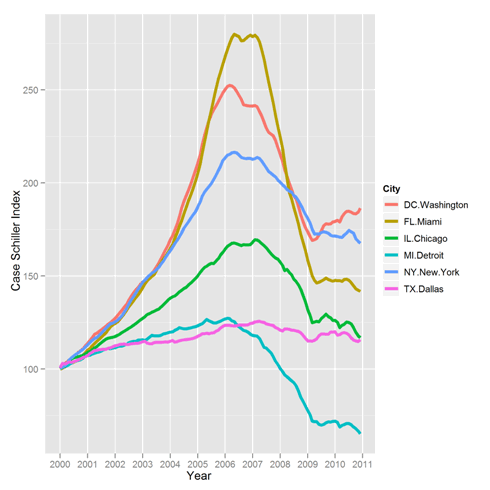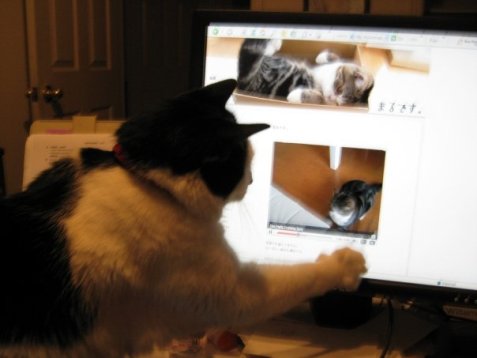Filed in
Conferences
 Subscribe
Subscribe to Decision Science News by Email (one email per week, easy unsubscribe)
JOIN DECISION SCIENCE NEWS IN BOULDER THIS SUMMER

What: Second Annual Boulder Summer Conference on Consumer Financial Decision Making
When: June 26-28, 2011
Where: St. Julien Hotel and Spa, Boulder, Colorado
You are invited JDMers to attend the 2011 Boulder Summer Conference on Consumer Financial Decision Making — to be held at the St. Julien Hotel and Spa in Boulder, Colorado, June 26-28, 2011.
http://leeds.colorado.edu/event/bouldersummerconference#overview
Consumer welfare is strongly affected by household financial decisions large and small: choosing mortgages; saving to fund college education or retirement; using credit cards to fund current consumption; choosing how to “decumulate” savings in retirement; deciding how to pay for health care and insurance; and investing in the stock market. In all of these domains, consumers are often poorly informed and susceptible to making serious errors that have large personal and societal consequences.
The Boulder Summer Conference is truly an exceptional opportunity to discuss cutting edge research on consumer financial decision making by scholars across diverse fields: JDM, economics, psychology, sociology, anthropology, marketing, finance, consumer behavior, social work, and family consumer sciences. We have lively discussion of this research by scholars, regulators, consumer advocates, and financial services professionals. Registration is limited to 120 conference participants.
FINANCIAL ADVISERS AND THE PSYCHOLOGY OF THE ADVISED

Your future self wants you to save, a series of rather labor-intensive studies carried out by Hal Ersner-Hershfield (pictured), Dan Goldstein, and Russ Smith suggest.
Shlomo Benartzi (UCLA), Nick Barberis (Yale), Kent Daniel (Columbia), Dan Goldstein (Yahoo and London Business School), Noah Goldstein (UCLA), John Payne (Duke) and Richard Thaler (Chicago) make up the Academic Advisory Board of the Allianz Global Investors Center for Behavioral Finance. Based on interviews with this set, the Center has released a white paper entitled “Behavioral Finance in Action Psychological challenges in the financial advisor/client relationship, and strategies to solve them“. It is basically advice for financial advisers, written with the conviction that if advisers know more about psychology, they’ll be able to provide better advice.
The paper, available at the Center’s Web site, was recently highlighted in a New York Times article, The Benefits of Telling the Ugly Truth by Jeff Sommer.
LINKS
DAN ARIELY, JAMES ANDREONI KEYNOTE SPEAKING. DEADLINE JUNE 1, 2011

“If only I could find paper and envelopes to match my skirt and jacket”
(This photo has little to do with behavioral economics,
but that didn’t stop them from using it on the TIBER Web site)
Join Ilja van Beest, Rik Pieters, Jan Potters, Diederik Stapel, and Marcel Zeelenberg in one of DSN’s favorite places this summer as …
You are invited to attend the 10th Tilburg Institute for Behavioral Economics Research (TIBER) symposium on Psychology and Economics, to be held at Tilburg University, August 19th, 2011.
We are happy to announce that Dan Ariely and James Andreoni are confirmed keynote speakers.
We invite contributions from the fields of psychology, economics, and marketing.
If you would like to present your work (in a 20-30 minute talk), please send an abstract (max. 300 words) to tibersymposium@uvt.nl before June 1st, 2011. You are also very much welcome to attend the symposium if you do not present your work.
Further information will soon be available from the website.
Filed in
Jobs
 Subscribe
Subscribe to Decision Science News by Email (one email per week, easy unsubscribe)
EXCELLENT PAY, MODERN INFRASTRUCTURE, STIMULATING DEPARTMENT, WALKING DISTANCE TO FRANCE AND GERMANY

The University of Basel, Switzerland has an very strong psychology department going under dean Ralph Hertwig (DSN has visited to confirm this). If you are looking for a job in the heart of Europe, this is an attractive one.
Not that you should apply for other reasons than intrinsic motivation, but we should mention that Swiss academic salaries are really, really high.
The Department of Psychology of the University of Basel, Switzerland, invites applications for a professorship in social psychology, with the appointment to begin by February 1, 2012.
The successful candidate’s research focus will be in the area of social cognition. Research activities in additional areas – for example, consumer psychology, marketing, or experimental economics – are desirable. The successful candidate will represent social psychology as a core discipline at the bachelor’s and master’s levels with respect to both research and teaching (seminars and lectures may be held in English). At the master’s level, the teaching of social psychology will be coordinated with that of economic psychology and decision science.
Applicants should have demonstrated a high level of academic productivity and applied successfully for research grants. They should further be committed to teaching and to university and departmental administrative service.
Depending on the successful candidate’s qualifications, the position will be filled at the level of full, associate, or assistant professor.
The University of Basel offers attractive terms of employment, a modern infrastructure, and a stimulating scientific environment (www.unibas.ch). Because the University of Basel actively seeks to increase the number of women on its faculty, women are particularly encouraged to apply.
To ensure full consideration, all application materials (CV, teaching statement, and teaching evaluations if available) should be submitted electronically by May 31, 2011 to karin.hettinger@unibas.ch.
For further information, please contact Ralph Hertwig (ralph.hertwig@unibas.ch).
Filed in
Books ,
Ideas
 Subscribe
Subscribe to Decision Science News by Email (one email per week, easy unsubscribe)
ONE IN TWENTY P = .05 RESULTS IS A FALSE ALARM ON AVERAGE

If you’re not familiar with xkcd and you are a reader of Decision Science News, that’s a source of dissonance in the universe that merits dissolving. Enjoy today’s post (above), and if you are like us, you might want to make the xkcd site one of your default home tabs.
Permanent link to the above comic: http://xkcd.com/882/
Filed in
Jobs
 Subscribe
Subscribe to Decision Science News by Email (one email per week, easy unsubscribe)
HARVARD DECISION SCIENCE LABORATORY 2011-2012 POSTDOC

The Harvard Decision Science Laboratory (HDSL), a university-wide biobehavioral research facility, invites application for a postdoctoral research position from qualified candidates with a recent (or forthcoming) Ph.D. in psychology, behavioral economics, or related fields. The Postdoctoral fellow will serve as a key member of the research team of Professor Jennifer Lerner, faculty director of HDSL, and as a critical resource to researchers working in the lab. In addition, the postdoctoral fellow will work together with HDSL’s executive director in directing a research experience program for undergraduates.
Mastery of experimental methods — encompassing the use of computer-based and web-based experimental modalities — is required. A demonstrated record of research accomplishment involving the use of psychophysiology monitoring systems — including heart rate and heart-rate variability, peripheral blood flow and temperature, blood pressure, respiratory rate, and skin conductance — will make for the strongest candidacy. Familiarity with study protocols utilizing salivary assays for neuroendocrine levels (particularly cortisol and oxytocin), and the use of these measures in experimental psychological science, is also desirable. Knowledge of MediaLab, z-Tree, SPSS, and E-Prime preferred, as well as experience in the experimental use of BioLab(tm) for physiological data collection and analysis. Interest in FACS coding is a plus.
This is a one-year term appointment from July 1, 2011 to June 30, 2012, renewable for another year upon review. The position is open to candidates who have recently earned their Ph.D. Salary and full benefits commensurate with Harvard-wide standards. Applicants should submit a cover letter describing their research interests, a curriculum vitae, up to two reprints (or preprints), and two letters of recommendation to Mark Edington, Executive Director, Harvard Decision Science Laboratory, at mark_edington@harvard.edu. Applications will be reviewed as they are received; fullest consideration will be extended to those received by April 15.
POSTDOCTORAL FELLOW. DYNAMIC DECISION MAKING LAB. CARNEGIE MELLON UNIVERSITY

The Dynamic Decision Making Laboratory (DDMLab) (www.cmu.edu/ddmlab) in the
department of Social and Decision Sciences at Carnegie Mellon University
(CMU) invites applications for Postdoctoral fellowship positions in social
and decisions sciences.
Research projects require experience planning and conducting laboratory
studies with dynamic simulations and decision making games. Fellows will be
involved in a research project aiming at the study of socio-cognitive
aspects of cooperation and conflict, using a combination of behavioral and
computational modeling methods. The ideal candidates will have a Ph.D. in
Psychology, Decision Sciences or Human Factors, and should have broad
research interests in all facets of dynamic decision making research.
Appointment will pay competitive rates based on background and experience.
The position is scheduled to start August 1, 2011 and extend for one or up
to two years.
Applicants should send curriculum vitae, statement of research skills and
interests, relevant journal papers, and three reference letters. Electronic
applications are encouraged. Please send electronic documents (Word, Pdf)
to: coty@cmu.edu or forward paper documents to:
Professor Cleotilde Gonzalez
Dynamic Decision Making Laboratory
Social and Decision Sciences Department
Carnegie Mellon University
5000 Forbes Ave – Porter Hall
Pittsburgh, PA 15213
SOCIETY FOR JUDGMENT AND DECISION MAKING NEWSLETTER

Society for Judgment and Decision Making Newsletter Editor Dan Goldstein reports that the March 2011 SJDM newsletter is ready for download.
http://www.sjdm.org/newsletters/11-mar.pdf
Enjoy!
Filed in
Ideas ,
R ,
Tools
 Subscribe
Subscribe to Decision Science News by Email (one email per week, easy unsubscribe)
DIFFERENT CITIES TELL DIFFERENT STORIES

Inspired by a tutorial called 5 Minute Analysis in R: Case-Shiller Indices, we decided to redo the analysis with 1) More up to date data and 2) Hadley Wickham’s super ggplot2 graphics package.
The above plot shows the general trend in home prices, relative to January 2000, in various cities, but is otherwise a mess.
Much like Olympic sports coverage, we next focus in on a few exceptional stories. It is much easier to read.

Miami sailed high and fell far. Detroit rose modestly and but dropped more than it went up. Dallas held steady. DC is enjoying a bit of renewed growth, but are it and New York yet to fall?
The graphs were surprisingly easy to create in R, and the full code is below. If you’d like to do your own analysis, the Standard & Poor’s Web site has data that you can download yourself. We chose the “seasonally adjusted” data set.
New to us in the code below was the “droplevels‘ command which was added to R’s version 12. It dispenses with unused factor levels that you sometimes end up with when subsetting data. Extra levels are often harmless, but in ggplot2 they show up in the legend. Without droplevels, the second graph would have the legend of the first graph.
library(ggplot2)
## Read in data, available from:
#www.standardandpoors.com/indices/sp-case-shiller-home-price-indices/en/us/?indexId=spusa-cashpidff--p-us----
dat=read.csv("CSHomePrice_History.csv")
mdf=melt(dat,id.vars="YEAR")
mdf$Date=as.Date(paste("01-",mdf$YEAR,sep=""),"%d-%b-%y")
names(mdf)=c("MonthYear","City","IndexValue","Date")
ggplot(data=mdf,aes(x=Date,y=IndexValue)) + geom_line(aes(color=City),size=1.25) +
scale_x_date("Year", minor="years") + scale_y_continuous("Case Schiller Index")
sm=subset(mdf,City %in% c('NY.New.York','FL.Miami','CA.Los Angeles','MI.Detroit',
'TX.Dallas','IL.Chicago','DC.Washington'))
sm$City=droplevels(sm$City)
ggplot(data=sm,aes(x=Date,y=IndexValue)) + geom_line(aes(color=City),size=1.5) +
scale_x_date("Year", minor="years") + scale_y_continuous("Case Schiller Index")
JDM SPECIAL ISSUE VOL II: RECOGNITION PROCESSES IN INFERENTIAL DECISION MAKING

If you’re not from Australia (and statistically speaking, you’re not), it is hard to say whether you recognize the above logo or not. Hungry Jack’s is the Burger King franchisee in Australia and thus gets to use the famous bun-and-textual-meat logo.
Editor John Baron and special issue editors Julian N. Marewski, Rüdiger F. Pohl and Oliver Vitouch are proud to announce the second special issue of the journal Judgment and Decision Making on Recognition Processes in Inferential Decision Making. The article includes 7 new articles, which in addition to the articles from the first special issue, make 16. A third issue is in the works. Please find the editors’ introduction here.
Decision Science News is in Australia this week. Though not the case with the Hungry Jack logo, we easily sorted the brand logos we observed down here into recognized and unrecognized during a two-hour walk through the city. Here are the results of that exercise:
NON-AUSTRALIAN BRAND LOGOS RECOGNIZED ON A TWO HOUR WALK IN SYDNEY
7-11
Apple Store
Abercrombie & Fitch
Arthur Murray School of Dance
Avis
Bally
Baskin Robbins
Ben & Jerry’s
Ben Sherman
Blockbuster
Body Shop
Burger King
Camper (shoes)
Canon
Citibank
Coke
Florsheim
French Connection
GNC
Hilton
HSBC
Hugo Boss
Ibis (hotel)
Kodak
Lavazza
Lee
McDonald’s
Mont Blanc
Oakley
Payless Shoes
Quality Inn
Quicksilver
Shell
Starbucks
Subway (sandwiches)
Tag Heuer
Wagamama (restaurant)
Western Union
AUSTRALIAN BRAND LOGOS RECOGNIZED ON A TWO HOUR WALK IN SYDNEY
Country Road
Gloria Jean’s
Uggs
BRAND LOGOS NOT RECOGNIZED ON A TWO HOUR WALK IN SYDNEY
About half of them
OTHER OBSERVATIONS ABOUT SYDNEY
They have cranes (both harbor and avian)
They would spell harbor “harbour”
The double yellow line is white
One USD = one AUD
They drive on the left
They have more cafes than people
ALL OF THE CONFERENCE, NONE OF THE BEING THERE

Hugo Mercier at Penn has created a “web conference” in which papers are posted online, and people can read and comment on them. It is just like a conference, minus the $100 per gallon of coffee charged by the hotel.
[A figure like this one was brought up at a SJDM conference committee meeting. Or maybe it was $800. Something crazy. –Ed]
The theme is “social decisions”. Here are the introduction and the schedule:
http://www.cognitionandculture.net/Social-decisions-workshop/workshop-decision-making-for-a-social-world.html
Definitely some big names on there. Enjoy!
 Subscribe to Decision Science News by Email (one email per week, easy unsubscribe)
Subscribe to Decision Science News by Email (one email per week, easy unsubscribe)













